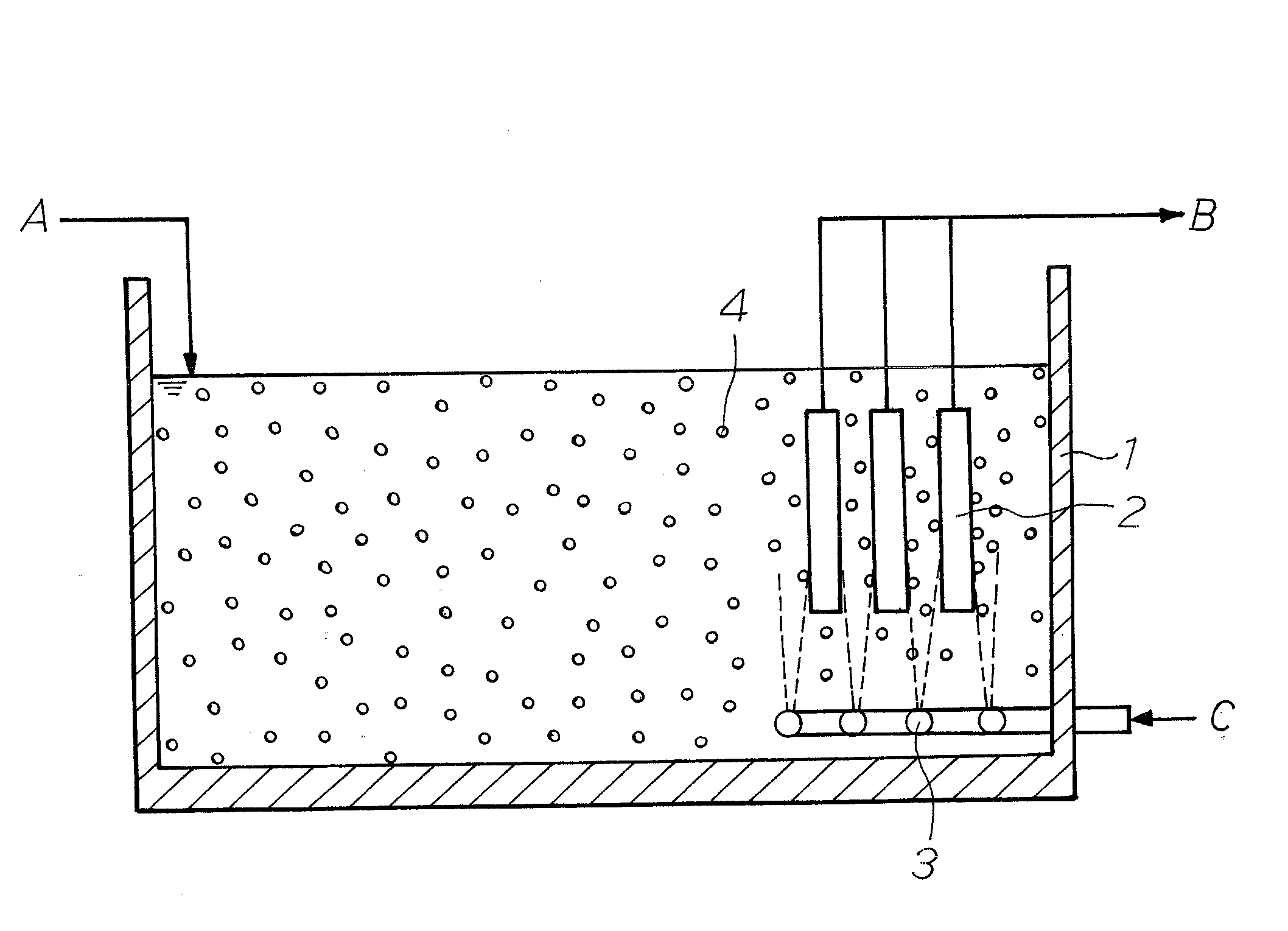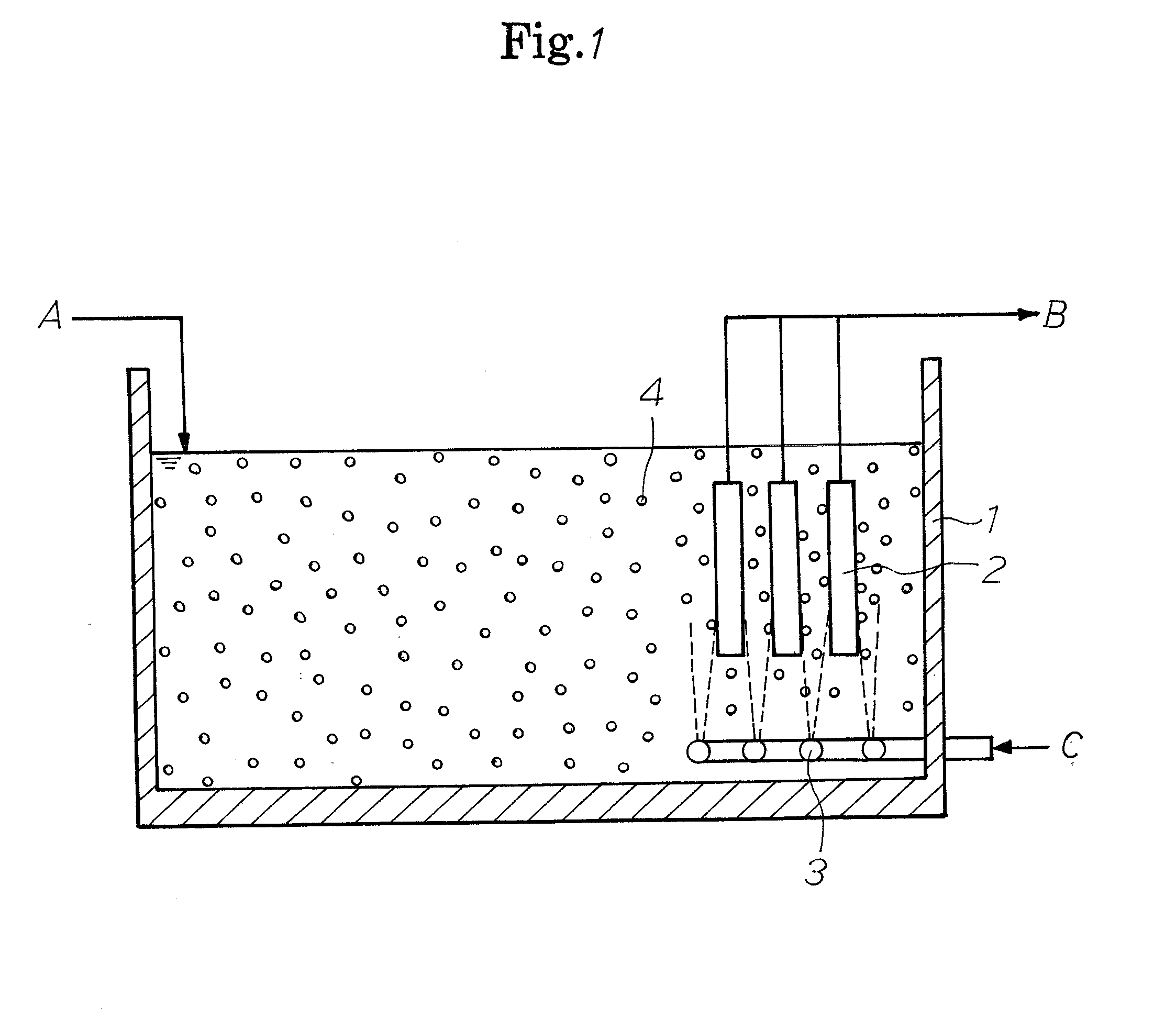Membrane-cleaning method for membrane bioreactor process
a bioreactor and membrane technology, applied in the direction of membranes, separation processes, multi-stage water/sewage treatment, etc., can solve the problems of deterioration of the rate of filtration through the membrane, inability to clean the membrane, and inability to remove sludge, so as to avoid the deterioration of the filtration rate of the separation membrane element through the membrane, the effect of maintaining the level of scraping effect and avoiding the deterioration of the level of scrap
- Summary
- Abstract
- Description
- Claims
- Application Information
AI Technical Summary
Benefits of technology
Problems solved by technology
Method used
Image
Examples
example 1
[0027]In order to investigate the effects of the membrane-cleaning particle, a comparative experiment was performed with the use of two kinds of cubic particles (a hydrophilic polyurethane sponge and a hydrophobic polyurethane sponge). Hydrophilization of the hydrophilic polyurethane sponge was performed by means of treatment such that a surface that makes contact with water to be treated is covered with polyethylene glycol (hydrophilic). Asperities of a particle surface are 1.0 mm in both cases. As the biological reaction tank, an apparatus of a Ludzack process type consisting of a denitrogenated basin and a nitrification tank was used. As the separation membrane element, six polymer flat membranes having an effective area of 0.4 m2 per membrane were submersed into a nitrification tank so as to obtain treated water. Leachate served as treatment wastewater. The membrane-cleaning particle was placed into the nitrification tank at a volumetric ratio of 0.7%. In addition, an operation ...
example 2
[0028]In order to investigate the effects of the membrane-cleaning particle, a comparative experiment was performed with the use of five kinds of spherical particles (hydrophilic polyurethane sponge) that had varying level of asperities. Asperities of a particle surface were 50 μm, 100 μm, 1000 μm, 2500 μm, or 3000 μm. As the biological reaction tank, a Ludzack process-type apparatus consisting of a denitrogenated tank and a nitrification tank was used. As the separation membrane element, six polymer flat membranes having an effective area of 0.4 m2 per membrane were submersed into a nitrification tank so as to obtain treated water. Sewage served as the treatment wastewater. The membrane-cleaning particle was introduced into the nitrification tank at a volumetric ratio of 0.7%. In addition, the operation was performed at an MLSS (mixed liquor suspended solids) of 5000 mg / L in the biological treatment tank. A membrane filtration flux was initiated at 0.8 m / day at the start of experim...
PUM
| Property | Measurement | Unit |
|---|---|---|
| specific gravity | aaaaa | aaaaa |
| specific gravity | aaaaa | aaaaa |
| pore diameter | aaaaa | aaaaa |
Abstract
Description
Claims
Application Information
 Login to View More
Login to View More - R&D
- Intellectual Property
- Life Sciences
- Materials
- Tech Scout
- Unparalleled Data Quality
- Higher Quality Content
- 60% Fewer Hallucinations
Browse by: Latest US Patents, China's latest patents, Technical Efficacy Thesaurus, Application Domain, Technology Topic, Popular Technical Reports.
© 2025 PatSnap. All rights reserved.Legal|Privacy policy|Modern Slavery Act Transparency Statement|Sitemap|About US| Contact US: help@patsnap.com


